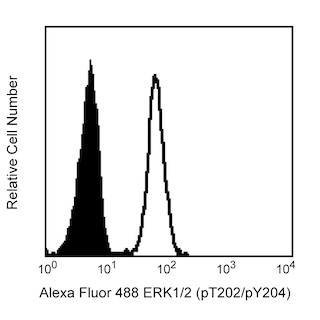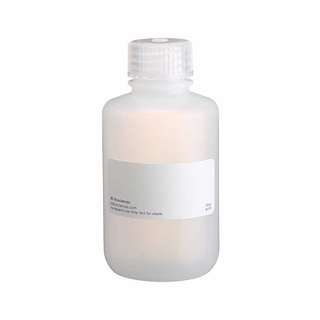-
Reagents
- Flow Cytometry Reagents
-
Western Blotting and Molecular Reagents
- Immunoassay Reagents
-
Single-Cell Multiomics Reagents
- BD® OMICS-Guard Sample Preservation Buffer
- BD® AbSeq Assay
- BD® OMICS-One Immune Profiler Protein Panel
- BD® Single-Cell Multiplexing Kit
- BD Rhapsody™ ATAC-Seq Assays
- BD Rhapsody™ Whole Transcriptome Analysis (WTA) Amplification Kit
- BD Rhapsody™ TCR/BCR Next Multiomic Assays
- BD Rhapsody™ Targeted mRNA Kits
- BD Rhapsody™ Accessory Kits
-
Functional Assays
-
Microscopy and Imaging Reagents
-
Cell Preparation and Separation Reagents
-
- BD® OMICS-Guard Sample Preservation Buffer
- BD® AbSeq Assay
- BD® OMICS-One Immune Profiler Protein Panel
- BD® Single-Cell Multiplexing Kit
- BD Rhapsody™ ATAC-Seq Assays
- BD Rhapsody™ Whole Transcriptome Analysis (WTA) Amplification Kit
- BD Rhapsody™ TCR/BCR Next Multiomic Assays
- BD Rhapsody™ Targeted mRNA Kits
- BD Rhapsody™ Accessory Kits
- United States (English)
-
Change country/language
Old Browser
This page has been recently translated and is available in French now.
Looks like you're visiting us from {countryName}.
Would you like to stay on the current country site or be switched to your country?




.png)

Two-color flow cytometric analysis of Basophils (2D7) expression in Human peripheral blood leucocytes. Human whole blood was stained with BD Horizon™ BV421 Mouse Anti-Human CD193 antibody (Cat. No. 562570/566279) and then fixed with BD Phosflow™ Lyse/Fix Buffer (Cat. No. 558049) and permeabilized with BD Phosflow™ Perm/Wash Buffer I (Cat. No. 557885). The cells were then stained with either BD Horizon™ R718 Mouse IgG1, κ Isotype Control (Cat. No. 566928; Left Plot) or BD Horizon™ R718 Mouse Anti-Human Basophils (2D7) antibody (Cat. No. 568380/568381; Right Plot). The bivariate pseudocolor density plot showing the correlated expression of Basophils (2D7) [or Ig Isotype control staining] versus CD193 was derived from gated events with the forward and side light-scatter characteristics of intact lymphocytes. Flow cytometry and data analysis were performed using a BD LSRFortessa™ X-20 Cell Analyzer System and FlowJo™ software.

Multiparameter flow cytometric analysis of Basophils (2D7) expression in Human peripheral blood leucocyte populations. Human whole blood was fixed with BD Phosflow™ Lyse/Fix Buffer (Cat. No. 558049) and permeabilized with BD Phosflow™ Perm/Wash Buffer I (Cat. No. 557885). The cells were then stained with either BD Horizon™ R718 Mouse IgG1, κ Isotype Control (Cat. No. 566928; Left Plot) or BD Horizon™ R718 Mouse Anti-Human Basophils (2D7) antibody (Cat. No. 568380/568381; Right Plot). The bivariate pseudocolor density plot showing the correlated expression of Basophils (2D7) [or Ig Isotype control staining] versus side light-scatter (SSC-A) signals was derived from gated events with the forward and side light-scatter characteristics of intact leucocyte populations. Flow cytometry and data analysis were performed using a BD LSRFortessa™ X-20 Cell Analyzer System and FlowJo™ software.
.png)

BD Horizon™ R718 Mouse Anti-Human Basophils (2D7)

BD Horizon™ R718 Mouse Anti-Human Basophils (2D7)
.png)
Regulatory Status Legend
Any use of products other than the permitted use without the express written authorization of Becton, Dickinson and Company is strictly prohibited.
Preparation And Storage
Recommended Assay Procedures
BD® CompBeads can be used as surrogates to assess fluorescence spillover (compensation). When fluorochrome conjugated antibodies are bound to BD® CompBeads, they have spectral properties very similar to cells. However, for some fluorochromes there can be small differences in spectral emissions compared to cells, resulting in spillover values that differ when compared to biological controls. It is strongly recommended that when using a reagent for the first time, users compare the spillover on cells and BD® CompBeads to ensure that BD® CompBeads are appropriate for your specific cellular application.
Product Notices
- Please refer to www.bdbiosciences.com/us/s/resources for technical protocols.
- This reagent has been pre-diluted for use at the recommended Volume per Test. We typically use 1 × 10^6 cells in a 100-µl experimental sample (a test).
- An isotype control should be used at the same concentration as the antibody of interest.
- Caution: Sodium azide yields highly toxic hydrazoic acid under acidic conditions. Dilute azide compounds in running water before discarding to avoid accumulation of potentially explosive deposits in plumbing.
- This product is provided under an Agreement between BIOTIUM and BD Biosciences. This product, and only in the amount purchased by buyer, may be used solely for buyer’s own internal research, in a manner consistent with the accompanying product literature. No other right to use, sell or otherwise transfer (a) this product, or (b) its components is hereby granted expressly, by implication or by estoppel. This product is for research use only. Diagnostic uses require a separate license from Biotium, Inc. For information on purchasing a license to this product including for purposes other than research, contact Biotium, Inc., 3159 Corporate Place, Hayward, CA 94545, Tel: (510) 265-1027. Fax: (510) 265-1352. Email: btinfo@biotium.com.
- Human donor specific background has been observed in relation to the presence of anti-polyethylene glycol (PEG) antibodies, developed as a result of certain vaccines containing PEG, including some COVID-19 vaccines. We recommend use of BD Horizon Brilliant™ Stain Buffer in your experiments to help mitigate potential background. For more information visit https://www.bdbiosciences.com/en-us/support/product-notices.
- Please refer to http://regdocs.bd.com to access safety data sheets (SDS).
- Alexa Fluor™ is a trademark of Life Technologies Corporation.
Companion Products




.png?imwidth=320)

The 2D7 monoclonal antibody selectively recognizes human basophils, Basophils (2D7). The antibody binds to a ~7.2 to 7.5 kDa basophil-specific protein, also known as the 2D7 antigen or ligand, present in secretory granules which has not been conclusively identified. Basophils normally comprise a relatively small percentage (<1%) of total peripheral blood leucocytes. Basophils express high levels of FceRI, a high affinity receptor for IgE. Upon activation through crosslinking of FceRI, basophils degranulate and may thus show reduced staining with the 2D7 antibody due to the release or destruction of the 2D7 antigen. The activated basophils release proinflammatory mediators that can either counter parasitic infections or lead to acute or chronic allergic diseases, including anaphylaxis, asthma, and atopic dermatitis. Activated basophils release a variety of mediators including the vasodilator histamine, proteolytic enzymes, and several cytokines which promote inflammation as well as heparin which prevents blood clotting. The 2D7 monoclonal antibody is useful for identifying human basophils since it does not recognize lymphocytes, monocytes, eosinophils, neutrophils, or mast cells.

Development References (6)
-
Agis H, Krauth MT, Mosberger I, et al. Enumeration and immunohistochemical characterisation of bone marrow basophils in myeloproliferative disorders using the basophil specific monoclonal antibody 2D7. J Clin Pathol. 2006; 59(4):396-402. (Clone-specific: Immunohistochemistry). View Reference
-
Foster B, Schwartz LB, Devouassoux G, Metcalfe DD, Prussin C. Characterization of mast-cell tryptase-expressing peripheral blood cells as basophils. J Allergy Clin Immunol. 2002; 109(2):287-293. (Clone-specific: Flow cytometry). View Reference
-
Horny HP, Sotlar K, Stellmacher F, et al. The tryptase positive compact round cell infiltrate of the bone marrow (TROCI-BM): a novel histopathological finding requiring the application of lineage specific markers. J Clin Pathol. 2006; 59(3):298-302. (Clone-specific: Immunohistochemistry). View Reference
-
Karasuyama H, Obata K, Wada T, Tsujimura Y, Mukai K. Newly appreciated roles for basophils in allergy and protective immunity.. Allergy. 2011; 66(9):1133-41. (Clone-specific). View Reference
-
Kepley CL, Craig SS, Schwartz LB. Identification and partial characterization of a unique marker for human basophils.. J Immunol. 1995; 154(12):6548-55. (Immunogen: Electron microscopy, Immunocytochemistry, Western blot). View Reference
-
Plager DA, Weiss EA, Kephart GM, et al. Identification of basophils by a mAb directed against pro-major basic protein 1.. J Allergy Clin Immunol. 2006; 117(3):626-34. (Clone-specific: Immunofluorescence, Immunohistochemistry). View Reference
Please refer to Support Documents for Quality Certificates
Global - Refer to manufacturer's instructions for use and related User Manuals and Technical data sheets before using this products as described
Comparisons, where applicable, are made against older BD Technology, manual methods or are general performance claims. Comparisons are not made against non-BD technologies, unless otherwise noted.
For Research Use Only. Not for use in diagnostic or therapeutic procedures.